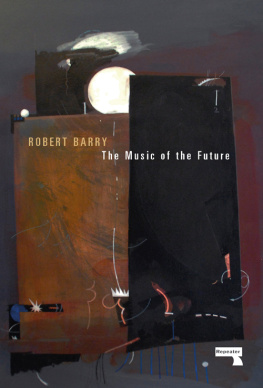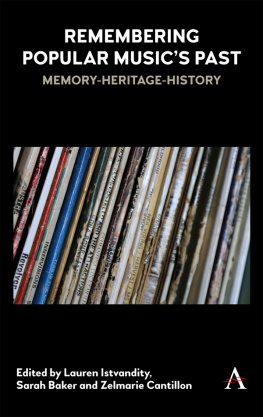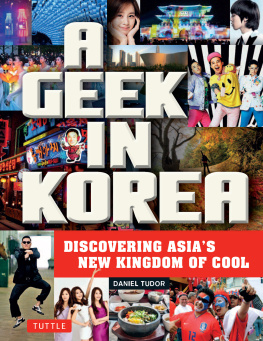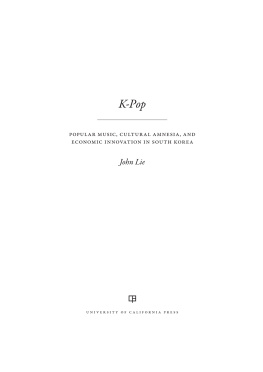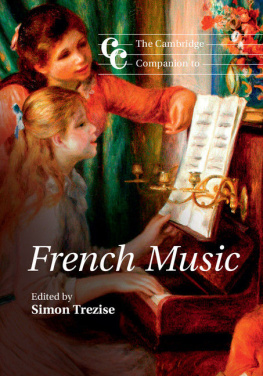Traditional Music
Sounds in Harmony with Nature
KOREA ESSENTIALS No. 8
Traditional Music
Sounds in Harmony with Nature
Copyright 2011 by The Korea Foundation
All Rights Reserved.
No part of this book may be reproduced or utilized in any form or by any means without the written permission of the publisher.
First Published in 2011 by Seoul Selection
B1 Korean Publishers Association Bldg., 105-2 Sagan-dong,
Jongno-gu, Seoul 110-190, Korea
Phone: (82-2) 734-9567
Fax: (82-2) 734-9562
Email:
Website: www.seoulselection.com
ISBN: 978-1-62412-042-8
INTRODUCTION
Music has played and continues to play a vital role in Korean society, providing a rich vein of material both as a dynamic musical culture and as a case study for examining general questions about the nature of music in its social context. Korean music has a well-documented history that spans millennia. It is a history that reflects an active engagement with surrounding cultures as well as indigenous creativity and innovation. The traditional classification of genres reflects an ordered society, each stratum of whichcourt, gentry, monastic, and folkenjoyed distinctive musical forms and expressions.
Korea is heir to one of the worlds oldest repertoires of notated music. Within the royal court of the Joseon Dynasty (13921910), music was carefully preserved by members of the Royal Music Academy (Jangagwon) as a sonic icon of the pure Confucian ethic that governed the lives of the royals and aristocracy. The landed gentry, the literati, cultivated refined traditions of sung poetry such as sijo (short verse) and gagok (long lyric songs), as well as painting, calligraphy, and the playing of stringed instrumentsthe gayageum and geomungo.
During the past several hundred years, virtuosic instrumental genres based upon the music of shamanist rituals and agricultural ceremonies (sanjo and sinawi) developed into highly sophisticated art forms, as have folk songs (minyo) and dramatic narrative (pansori). Samulnori, a form of chamber music for four percussion instruments based upon the rhythmic patterns of the ancient farmers band (nongak or pungmul), was introduced in 1978 and has since enjoyed a worldwide following.
The resurgence of interest in traditional music in Korea following three-quarters of a century of cultural devastation through colonialization, war, and rapid industrialization is nothing short of miraculous; the study of this renewed interest provides a revealing history in itself. This book will examine the development of Korean traditional music. We will look at what makes it unique, survey its wide variety of genres, and review the dramatic history of the art form, which has risen from near extinction to achieve growing popularity. We will also learn about some of the more influential performers and discover where we might experience this most Korean of arts with our own two ears.
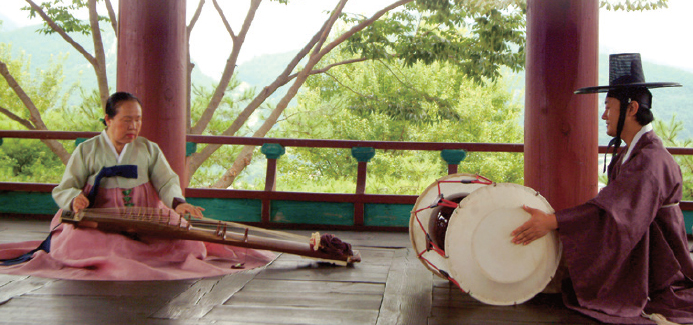
Korean music is solemn and grand, with beautiful tones. It is one of the most expressive music types in the world, majestic and free. The naturalness and mysteriousness of its melodies are unmatched by any other music in the world. It is music of the mind and the spirit.
Allan Hovahness,
American contemporary composer
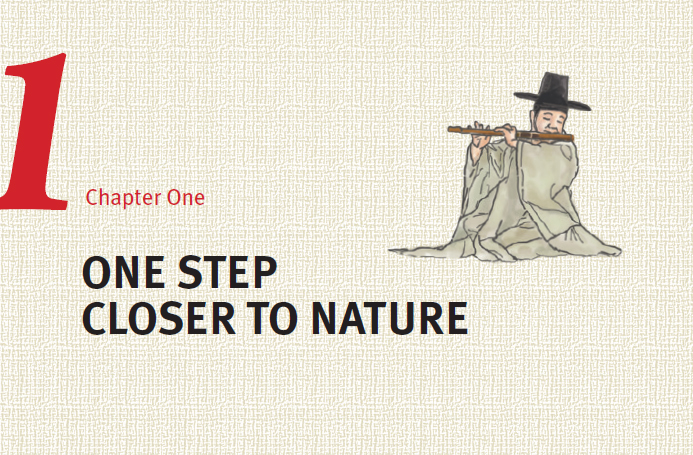
T he 1944 edition of the Harvard Dictionary of Music identifies Korean music as being the same as Chinese music. The origin of this error can be traced back to M. Courant, who, in writing La Musique de Coree for Lavignacs Encyclopedie de la Musique, based his research on literary documents rather than any experience or knowledge of Korean music. According to his study of ancient Korean documents such as Goryeosa (History of Goryeo), Akhak Gwebeom (Canon of Music), and Jeungbo munheonbigo (The Augmented Reference Compilation of Documents), Courant wrote that there were a great number of Chinese instruments in Korea.
The first time Korean traditional music was really introduced overseas was in 1884, when Horace N. Allen, minister of the American legation in Seoul, arranged for ten Korean musicians to perform at the Boston International Expo. At the time, the newspaper reviews said that Korean traditional music had great value as an Asian music form. Another Korean music performance in the US followed a long while later in 1929.
From the 1950s, Western scholars were able to hear Korean music for themselves thanks to recording technology and the spread of LPs. It was through this direct experience with Korean music that they learned just how different Korean music was from that of the countrys neighbors, China and Japan. The classification of Korean music as Chinese can be attributed simply to the fact that literature mentions the names of the five-tone (pentatonic) musical scale and the 12 chromatic pitches in Chinese characters. The notion of Korean music as a genre of Japanese music can be attributed to the spread of erroneous information during Japanese colonial rule. On hearing Korean music, it becomes clear to anyone that it is unique.
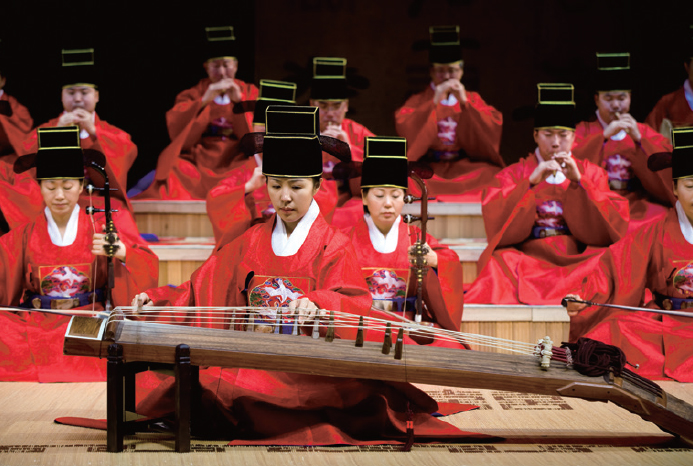
Korean classical music of its own uniqueness
Music of the Mind and Spirit
In 1921, the Japanese musicologist Hisao Tanabe heaped lavish praise on Korean music. After listening to classical court music, or aak, he said, This music is a series of mystical melodies that seem to open up the world that links the world of man to the heavens. Korean classical court music is voluptuously beautiful, finished off to perfection by court dance music. It is graceful and refined. He added, The world must be made to acknowledge Korean music as a unique and precious thing, an international cultural treasure.
The Chinese music critic Chai Ling said, Koreas ancient musical instruments are capable of producing flowing rhythms that express their esoteric and yearning sentiments. In comparing such music to popular modern love songs, it is clearly evident which has the more artistic value. Different in feeling from Western music or Indian Buddhist music, it is easy to get a feel for the Oriental religious perspective and for the gods from ancient Korean music.
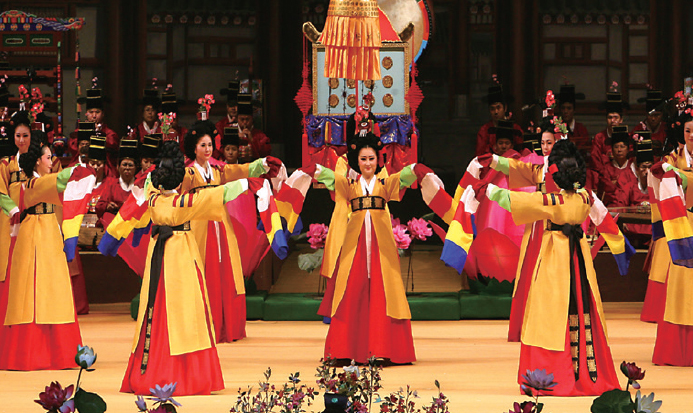
Court dancers perform to court music.
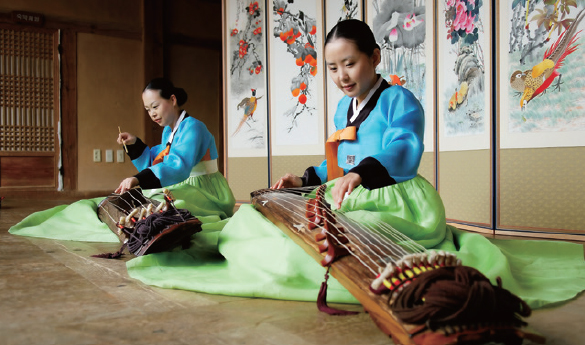
The gayageum, Koreas most representative musical instrument
The famous American contemporary composer Allan Hovahness said, Korean music is solemn and grand, with beautiful tones. It is one of the most expressive music types in the world, majestic and free. The naturalness and mysteriousness of its melodies are unmatched by any other music in the world. It is music of the mind and the spirit.
Next page


![Robert Choi - Korean Folk Songs: Stars in the Sky and Dreams in Our Hearts [14 Sing Along Songs with the Downloadable Audio included]](/uploads/posts/book/423508/thumbs/robert-choi-korean-folk-songs-stars-in-the-sky.jpg)
